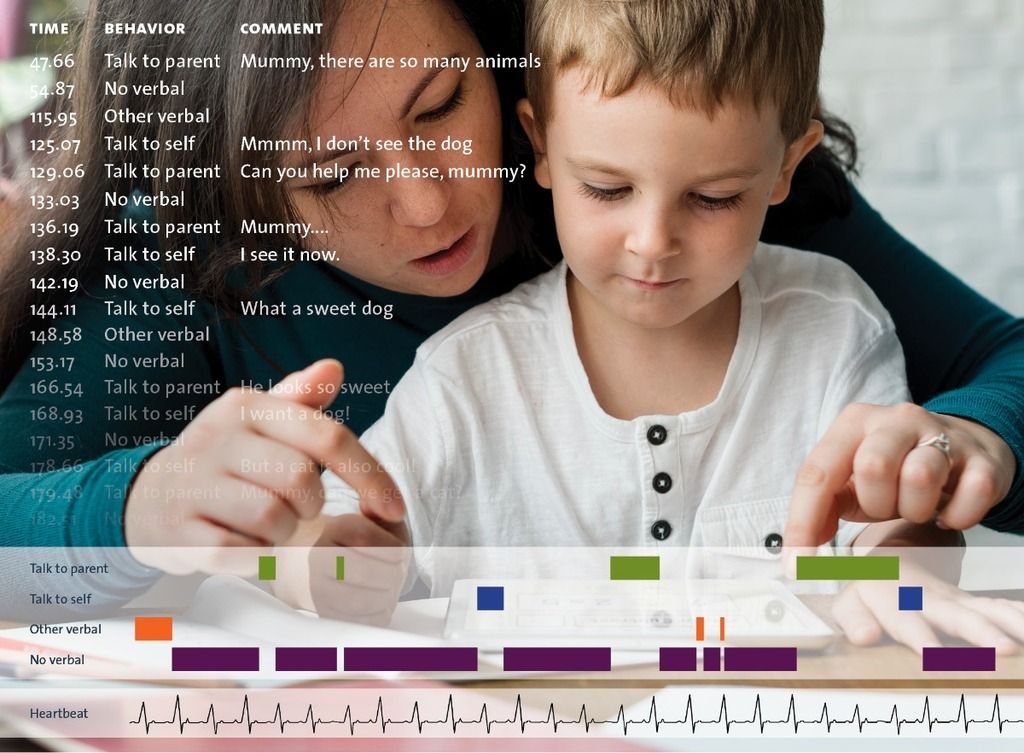Behavioral coding: What and how
When you study human behavior, coding your data is the initial step to analyze data. Coding behavior enables you to evaluate your research questions and draw reliable conclusions.
Posted by
Published on
Mon 20 Nov. 2023
Topics
| Coding Behavior | Coding Schemes | FACS | Measuring Behavior | The Observer XT |

By observing behavior, you discover an awful lot about human life. For instance, you can study how children develop, how dyads interact, how consumers respond to advertisements, how a team communicates, and so on.
When you are observing behaviors, either live or using recorded videos, you can gain an enormous amount of insight by coding the behaviors you are observing. Whether it is a child playing, a doctor and a patient interacting, or students practicing a new skill.
What is behavioral coding?
When you study human behavior, coding your data is the initial step to analyze data. The data obtained from (video) observations, surveys, or experiments are in raw form. This data needs to be refined and organized to be able to evaluate and draw conclusions.
Behavioral coding helps quantify qualitative data and gives sense to raw data. It categorizes your data meaningfully.
Behavioral coding has several benefits:
- Precise and reliable results
- Objective and replicable results
- Quantitative results
A coding scheme is the actual measuring instrument. However, setting up a good coding scheme often requires quite some thinking. One pitfall can be avoided easily; stick to what you want to know and do not elaborate beyond that. As manual coding will take a lot of time it is best to limit the amount of codes to what you need to know. For instance if you are interested in eating behavior, do not add codes for talking.
FREE WHITE PAPER: How to set up a coding scheme
Download here the FREE white paper 'How to set up behavioral coding' and get 7 tips about:
- Defining your behavior group
- Point events
- Coding from a diversity of sources
Using behavioral coding
Behavioral coding is a way of getting to know your data better and what behaviors are of interest. It is an important step in the process of the analysis of your data and explaining why things happen.
Behavioral coding can be useful prior to actual data collection for pretesting data collection procedures, for example to discover which codes are most valuable, and which wording can be best used. Of course coding behavior during data collection is very common, but certainly also after data collection to evaluate the quality of the data and to explore causes and effects of behaviors.
What behaviors can you code?
Depending on what your research questions are, you can narrow down what behaviors you are going to be coding. For example:
- Body language and non-verbal behavior, e.g. posture, movements, gaze, eye contact, and gesturing.
- Verbal behavior, e.g. talking, intonation, and tone.
- Facial expressions, e.g. specific emotions and muscle movements.
Using the codes, you might be looking at frequencies in behaviors and at sequences, or at similarities and differences. Duration of eye contact or talking may also give valuable clues.

There are several coding schemes available that you can use. Examples of published coding schemes include Facial Action Coding System (Ekman, Friesen & Hager, 2002), Body Action & Posture Coding System (Dael, Mortillaro & Scherer, 2012), and Annotation Scheme for Conversational Gestures (Kipp, Neff & Albrecht, 2007).
You can use these coding schemes as a base, so you do not have to figure out everything from scratch. Another benefit is that these coding schemes are already validated.
Download here the FREE white paper 'Facial Action Coding System (FACS)'
How to use behavioral coding: an example
The research team of Lenna Ontai at the University of California conducted a study to measure parent-food-related behaviors. Parents were asked to score 27 statements of My Child at Mealtime (MCMT), such as ‘I get my child to eat by explaining that the food is good for him’, ‘I praise my child for eating’, and ‘I hand-feed my child to get her to eat’. A subsample of 60 caregivers participated in the mealtime observations, which were recorded in their home.
These recordings were all coded using The Observer XT. Behavior codes were adapted from the modified BATMAN (Bob and Tom's method for assessing nutrition; Klesges et al., 1983) coding procedure documented by Koivisto and colleagues (Koivisto, Fellenius, & Sjödén, 1994).
FREE TRIAL: Try The Observer XT yourself!
Request a free trial and see for yourself how easy behavioral research can be!
- Work faster
- Reduce costs
- Get better data
Coding mealtime behaviors
The researchers coded nine food related behaviors. These behaviors were categorized in parent-centered behaviors:
- physical manipulation (puts child in the chair)
- feeding child (places foods or drinks into child’s mouth)
- verbal demands to eat (tells child they need to eat)
- bargaining (engages in a negotiation about quantity of food to be consumed)
And child-centered behaviors:
- eating statements (statements about the child eating)
- eating inquiries (questions about the child eating either presently or during another meal)
- requests to eat (asking child to eat or try a food)
- preference statements about food (whether the child likes/dislikes a food)
- general food statements (statements about food made to the child)
Most of the codes are related to speech. Speech is a process that takes a while, therefore the researchers used 10 seconds segment codes for speech related to the same topic. Behavior codes (like manipulation and feeding) were not considered mutually exclusive and could occur at the same time, while speech codes could only receive one code.
By comparing the self-reported MCMT responses to the observed and coded parent-centered and child-centered mealtime behaviors, the researchers concluded that the MCMT reliably measures parent-centered and child-centered behaviors.
Designing optimal coding schemes in The Observer XT
In the Noldus Webinar 'Behavioral Coding - Designing optimal coding schemes in The Observer XT', we will show you how to create coding schemes that allow you to reach your behavioral endpoints but, at the same time, are clear enough for efficient and reliable coding. Interested? Watch the webinar on-demand at your convenience!
References
- Dael, N.; Mortillaro, M. & Scherer, K.R. (2012). The Body Action and Posture Coding System (BAP): Development and Reliability. J Nonverbal Behav, 36, 97–121. https://doi.org/10.1007/s10919-012-0130-0
- Ekman, P.; Friesen, W. V.; Hager, J. C. (2002). Facial action coding system: The manual on CD-ROM. Instructor’s Guide. Salt Lake City: Network Information Research Co.
- Fowler, F. J., Jr., & Cannell, C. F. (1996). Using behavioral coding to identify cognitive problems with survey questions. In N. Schwarz & S. Sudman (Eds.), Answering questions: Methodology for determining cognitive and communicative processes in survey research, 15–36. Jossey-Bass/Wiley.
- Kipp, M.; Neff, M. & Albrecht, I. (2007). An annotation scheme for conversational gestures: how to economically capture timing and form. Lang Resources & Evaluation, 41, 325–339. https://doi.org/10.1007/s10579-007-9053-5
- Ontai, L.L.; Sutter, C.; Sitnick, S.; Shilts, M.K. & Townsend, M.S. (2019). My Child at mealtime parent self-assessment of food related behaviors: Validation with mealtime behaviors. Appetite, 136, 62-69. https://doi.org/10.1016/j.appet.2019.01.016
- https://www.coursera.org/lecture/questionnaire-design/behavior-coding-7Tgyt
- Webinar: Nonverbal behavioral Coding for Researchers: https://www.youtube.com/watch?v=4BcOOWcttzY
Related Posts

Early infant behavior development of hand preference

The role of inhibitory control on substance use in adolescence
